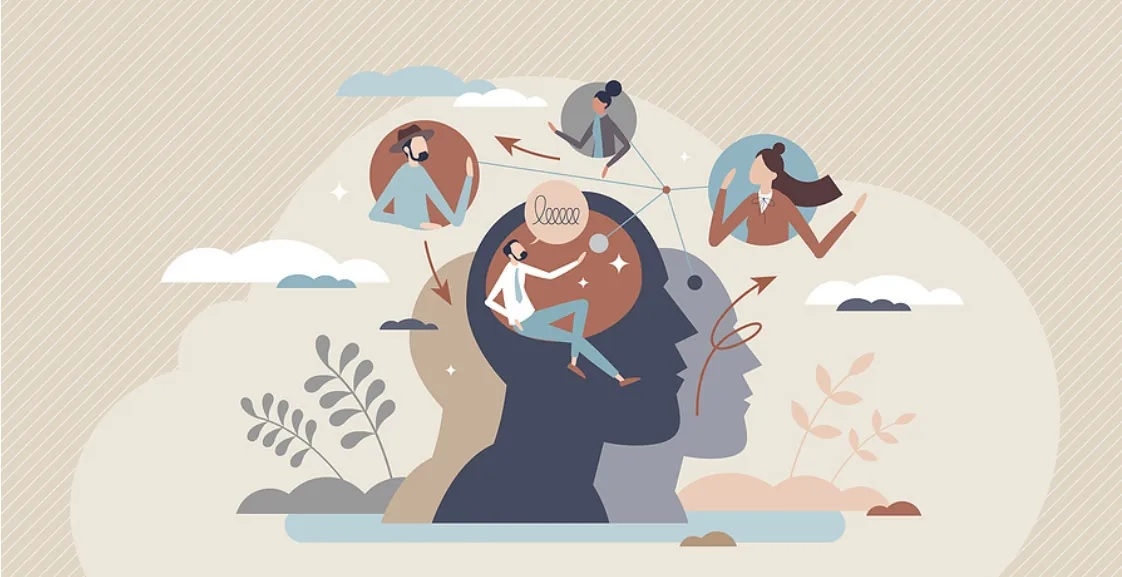Cognitive Theory In Indian tradition
10 Nov 2024 09:43:41

By DR BHUSHAN KUMAR UPADHYAYA :
C
ognition is one of the
basic theories of the
Western psychology. It
deals with how thoughts arise
in our brain and how they get
converted into emotions both
good or bad, ultimately impacting our behavior. Ulric Neisser
is called the pioneer of cognitive psychology. According to
the cognitive psychology of
Neisser, thoughts influence our
behaviour and mould it in different ways. Psychology propounds that thoughts are the
self arising attributes of the
brain. When different stimuli
reach our brain through sense
organs, the brain processes
those stimuli and accordingly
corresponding feelings are
generated and we start behaving in a particular way. The
Rasa theory of the Sanskrit
aesthetics is one the best examples of a cognitive theory. It
was first propounded by the
sage Bharata in his famous
treatise Natyashastra in the second century BC. Although it is
described in the context of
dramaturgy, it has universal
application in the field of cognition. In the sphere of aesthetics, the word Rasa means
an emotional state of the
mind. According to Bharata ,
there are eight Rasas or emotional states of the human
mind.
They include Shringar or
love, Hasya or laughter, Veera
or heroism, Bhayanaka or horror, Vibhatsa or disgust,
Adbhuta or amazement, Krodha
or anger and Raudra or fearful.
One more Rasa named Shanta
or peace was later added by
other Sanskrit scholars. The
sage Bharata has given very
comprehensive details about
how these emotional states or
sentiments arise. According to
him, there are eight Sthayi
Bhavas in our mind. These
Sthayi Bhavas are the permanent and innate thoughts
which are naturally ingrained
in our mind. They are Rati or
love, Hasa or humour, Shoka or
grief, Krodha or anger, Utsaha
or enthusiasm, Bhaya or fear,
Jugupsa or aversion and
Vismaya or wonder. When
these Sthayi Bhavas or innate
thoughts get associated with
Vibhava, Anubhava and
Vyabhichari Bhavas, different
types of emotional sttates are
generated. Vibhava is the subject where this emotional state
gets manifested or it refers to
the stimulus also which causes
that emotional state. Anubhava
is the fourfold reactions in the
behavior of the subject namely
Kayika or physical, Vachika or
verbal, Aharya or related to a
particular type of dressing and
Sattvika or mental. Vyabhichari
or Sanchari Bhavas are the
fleeting emotions which
appear and disappear quickly .
These fleeting emotions correspond to the permanent and
innate thoughts which already
exist in the mind. For example
if the Veera Rasa or the heroic
sentiment of emotion is
expressed, Romancha or thrill,
Garva or pride, Dhairya or
patience, Ugrata or vehemence,
etc, start getting manifested.
The sage Bharata has enumerated thirty three such fleeting
emotions in the expression of
the eight emotional states of
the mind. The Rasa theory of
Bharata has been interpreted
differently by different Sanskrit
scholars. Bhatta Lollata is of
the opinion that the emotional
state is the creation of the
interplay of the innate
thoughts, stimulus and the
fleeting emotions. Shankuka
propounds that it is not the
creation, but the cognition
takes place through inference.
Bhatta Nayak states that the
cognition or the particular
emotional state is the result of
the generalisation. The most
famous Sanskrit philosopher,
Abhinava Gupta opines that
the emotional state is the
expression of the innate
thoughts through the different
instruments including the subject, stimuli and fleeting emotions. Thus, we find that the
Rasa theory of the Sanskrit
aesthetics is a very intricate
and scientific exposition of
cognitive expression.

(The writer is Former DG
Police & CG, Homeguards,
Maharashtra)
■
